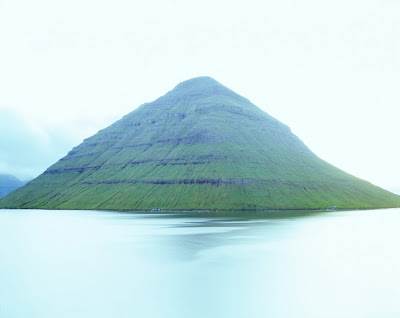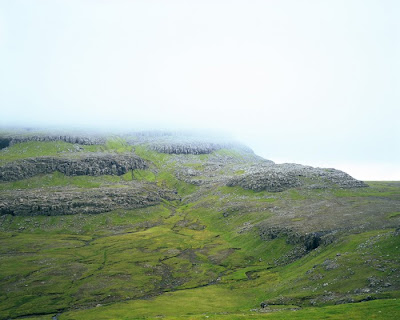



Geert Goiris
Work from Slow Fast.The iconography of Geert Goiris includes rather cheerless interiors, deserted playgrounds, stationary locomotives, staged explosions in park-like surroundings, and mysterious constructions that have, at some time, embodied a modernist architectural Utopia. His major fascination and his most concentrated attention, however, are focused on desolate landscapes, which often seem to share the uncanny aspect of his other pictures. With his mild irony and sensitive astonishment, which lend his preference for sharpness and detailing an enigmatic character, Goiris never strives for the grotesque and the spectacular, however. His landscapes are isolated, still, uninhabited, and motionless. Goiris photographs chiefly barren deserts and lava landscapes, which evoke a geological instead of human scale. They are also open, transparent landscapes, as it were, in which you can see far into the distance and which entail specific challenges for the photographer in terms of framing and depth of field. It is no coincidence, either, that he often photographs bone-dry polar regions, taking advantage of the striking local light conditions and letting his eye fall on traces of human presence, in particular, which remain long preserved. Goiris’ nebulous, vulnerable images portray a fragile, entropic landscape, in which natural beauty is often on the point of rotting, eroding, or melting. In that sense, his works sometimes
assume a slightly threatening undertone that, averse to a spectacular appropriation of an aesthetics of the sublime, plainly resounds with the narrative images from cinema, television, and other media.
Goiris’ silent and timeless landscapes, however, are part of an expansive and modern world in which people move rapidly. This is clear from the series Slow Fast, which was made in the summer of 2007 and which consists of two complementary components. The first component is a series of pictures taken on the Faeroe Islands, which are situated in the Atlantic Ocean between Norway and Iceland. These landscapes link up perfectly with Goiris’ iconographic preference for a barren, Nordic nature with its characteristic atmospheric effects rousing the photographers’ eye.
These “slow” landscapes, majestical symphonies in green and grey, seem to embody a geological scale transcending human history. The slowness is emphasized by the isolated position of these islands, their steep rocky coasts rising above the endless surface of the ocean. Goiris, moreover, visualizes this slowness by fully employing the inherent possibilities of photography – a medium that, from its inception, was associated with an uncanny slowness and stasis. As in nineteenth-century landscape photography, Goiris uses long exposures that transform water surfaces into smooth veils. These tranquil islands are confronted with their opposite in two ways. The image of a group of islands situated in the middle of an endless surface of water is combined with a second series of images showing mountains surrounding salt flats, which were
once an inland sea. In addition, the slowness of these landscapes is connected to an interest in supersonic speed. After all, the second component of Slow Fast consists of pictures of the so-called Speed Week on the Bonneville Salt Flats near Wendover in Utah. In this American desert, which was already used for motor sports in 1912, speed records on land have been beaten repeatedly since the 1930s. All kinds of motorized vehicles scratch traces in the dazzling soil. During winter months, however, rains erase these traces changing the barren salt flats into virgin flat surfaces again. While Goiris uses the medium of photography’s slowness to give the Faeroe landscapes and compositions a perfect horizon, natural forces supply the horizontal surface in the images of the American desert. Goiris feels unmistakably attracted to the whiteness of these endless salt flats: just like the snowy Arctic regions he photographs regularly, the dazzling terrain of these salt flats implies specific photographic challenges. These Suprematist salt flats, which are a kind of terrestrial equivalent of Malevich’ White on
White, are the spectacular backgrounds for a series of fetishes of speed. After all, the subject of this series is first and foremost the so-called streamliners, motorized vehicles their bullet and rocket shapes evoking the same nostalgic-futurist associations as the architectural constructions that Goiris has photographed on other occasions. Situated in landscapes with Old-Testament associations, which have been used abundantly in both westerns and science-fiction films, Goiris presents the streamliners as almost mythical vehicles. In Slow Fast, speed and slowness, aerodynamics and telluric stasis, industrial modernity and archaic powers, and
colorful consumer culture and transcendent abstraction seem to balance each other." - Steven Jacobs
No comments:
Post a Comment